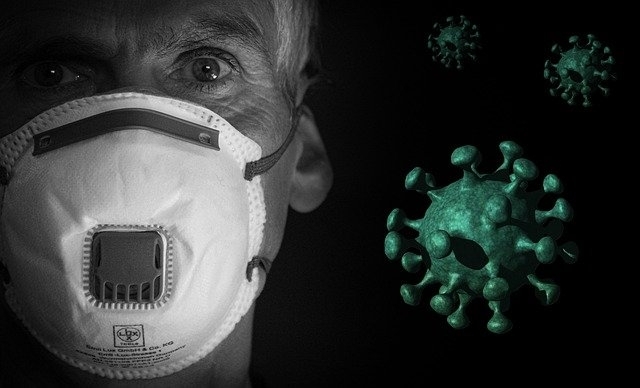


The hypothesis was raised by scientists at a FAPESP-funded research center, on the basis of an epidemiological survey involving 1,744 Brazilian couples where at least one partner was infected (photo: Pixabay)
Published on 09/06/2021
By Elton Alisson | Agência FAPESP – Besides being more susceptible to contracting severe COVID-19 and to dying from the disease, men are more likely to be infected first and to transmit the novel coronavirus (SARS-CoV-2) faster than women, according to a study by researchers who analyzed data from an epidemiological survey involving 1,744 Brazilian couples.
The researchers are affiliated with the Human Genome and Stem Cell Research Center (HUG-CELL), one of the Research, Innovation and Dissemination Centers (RIDCs) funded by FAPESP. They have reported the results of the study in a paper (not yet certified by peer review) posted to the preprint platform medRxiv.
“Our findings corroborate and are in accord with discoveries made by our own recent studies, which suggested men transmit the virus more than women,” Mayana Zatz, a professor at the University of São Paulo’s Institute of Biosciences (IB-USP) and principal investigator for HUG-CELL, told Agência FAPESP.
A study published in early August in the journal Diagnostics analyzed the results of a test that detects SARS-CoV-2 in saliva and was developed by researchers at HUG-CELL. Viral load in men’s saliva was about ten times higher than in women’s, especially for subjects aged 48 or less. This difference in viral load was not detected by a nasopharyngeal swab test, according to the study, which was led by Maria Rita Passos-Bueno, professor of genetics at IB-USP.
“Because the virus is mainly transmitted in saliva droplets, we deduced that this explains why men transmit it more than women,” Zatz said.
In addition to this observation, Zatz received reports of couples, many of whom were both physicians, where the female partner was infected by SARS-CoV-2 and manifested mild or moderate symptoms while the male partner was asymptomatic. Some months later, the male partner was infected after coming into contact with male patients, reinforcing the theory that men transmit the virus more than women.
To test the hypothesis, the HUG-CELL researchers collected data from more than 2,000 couples with an average age of 45 and not then vaccinated against COVID-19, where at least one partner was diagnosed as having contracted the disease and manifested symptoms. The data was collected between July 2020 and July 2021 by means of emails and questionnaires.
To rule out behavioral differences – such as men’s greater reluctance to wear a mask and maintain social distancing, demonstrated by research conducted during the pandemic – the researchers analyzed viral transmission in more than 1,000 couples who cohabited during the period without conjugal distancing or other protective measures.
The couples were divided into a concordant group, in which both partners were infected, and a discordant group, in which one partner remained asymptomatic despite close contact with the infected partner.
The combined data showed that in both groups the male was the first or only partner infected in most cases.
“We found that men were infected first much more than women, in concordant as well as discordant couples. A total of 946 men were infected first, compared with 660 women,” Zatz said.
The study was funded by FAPESP via two projects: 14/50931-3 and 20/09702-1.
Natural resistance
The researchers also analyzed genetic material from couples in which only one partner was infected by SARS-CoV-2 although both were exposed to the virus, to understand why some people are naturally resistant to infection. Preliminary results of this study, which has also been reported in an article posted to medRxiv, suggest genomic variants more frequently found in susceptible partners led to the production of molecules that inhibit activation of defense cells known as natural killers, or NKs (more at: agencia.fapesp.br/35839/).
The complete findings of the study, which was conducted in collaboration with Erick Castelli, a researcher at São Paulo State University (UNESP) in Botucatu, will be published shortly in the journal Frontiers in Immunology.
The article “Men are the main COVID-19 transmitters: lessons from couples” (doi: 10.1101/2021.08.18.21262187) by Monize V. R. Silva, Mateus V. de Castro, Maria Rita Passos-Bueno, Paulo A. Otto, Michel S. Naslavsky and Mayana Zatz is at: www.medrxiv.org/content/10.1101/2021.08.18.21262187v1.
Source: https://agencia.fapesp.br/36779